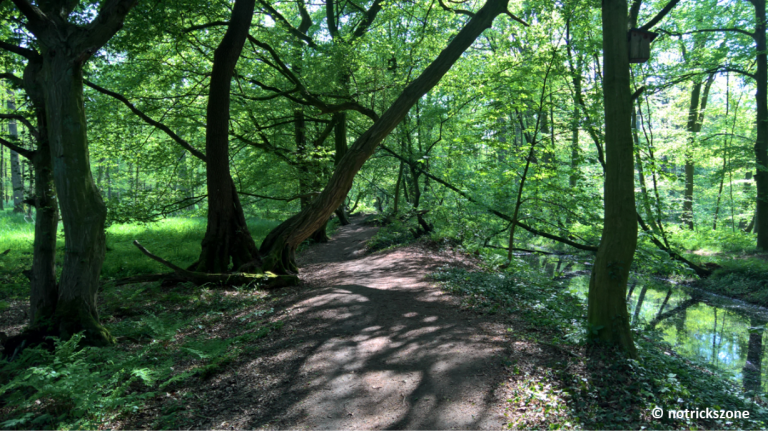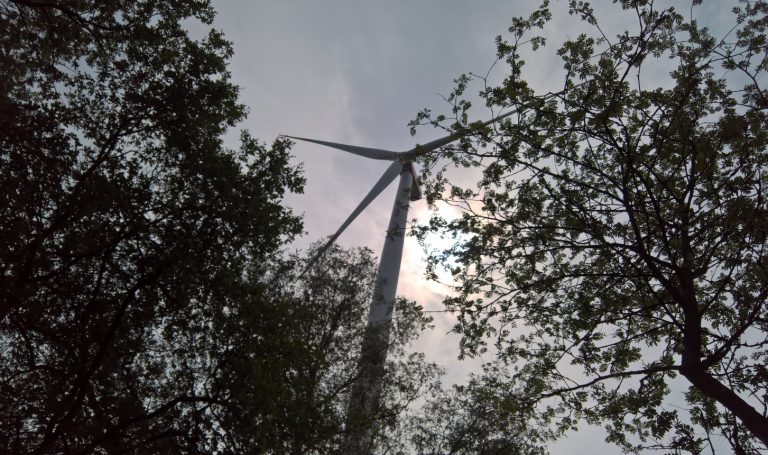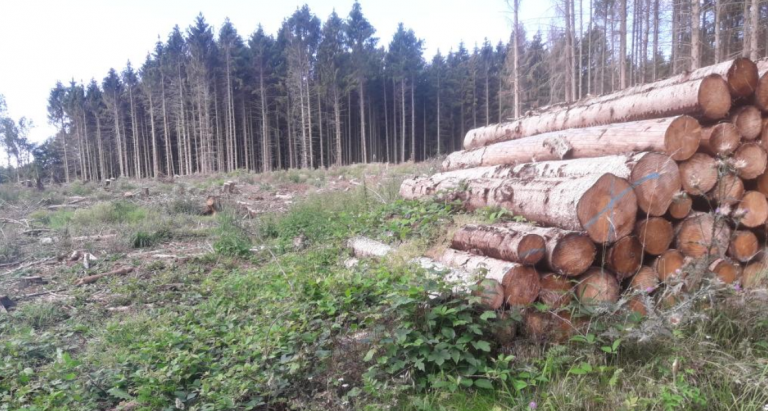A new study published in the journal Ecological Solutions and Evidence shows that forestry management has a significant influence on the cooling capacity of forests.
Our cooling forests. Photo: Copyright P. Gosselin
The study shows why burning trees in “sustainable” biomass plants using wood chips imported from around the world and deforestation to make way for wind parks are really bad ideas. Deforestation leads to warming.
And then imagine the effect trees have in sprawling megalopolises. One could easily argue that poor urban planning has been one of the main drivers of warming over the past 100 years. See cities with the most trees here, and here.
Forest ecosystems influence climate on global and local scales, the scientists say in the new study. One important feature of forests is the regulation of ecosystem microclimate.
The original press release for the study is here.
Canopy degradation leads to warming
Shading by trees, evaporation of water, storage of heat in biomass, and energy conversion through photosynthesis cause forests to cool themselves and their surroundings during hot weather. This can prevent damaging maximum temperatures, especially during prolonged heat waves, say scientists from Eberswalde (EUSD) in the study.
The scientist responsible for the study, Jeanette Blumröder, of the University for Sustainable Development, EUSD, states, “Increased logging and a correspondingly greater opening of the canopy drive up the maximum temperatures in the forest.”
0.5°C warmer with 10% less trees
An extensive series of measurements in beech forests and pine forests in northern Germany from the heat summers of 2018 and 2019 confirm that whenever the canopy is opened by 10%, the “average maximum temperatures increase by about half a degree Celsius”.
In a heavily thinned forest with a disintegrated canopy and interspersed with wind turbine access roads, the microclimatic regulation that is characteristic of forests is lost. This leads to severe heat and drought-induced damage and the dieback of old exposed trees in particular, new study finds. Photo: Copyright P. Gosselin
9°C warmer with 67% less biomass
In biomass-poor pine plantations (177 m3 per hectare), the average maximum temperature was 9°C higher than in relatively biomass-rich beech forests (> 565 m3 per hectare).
Over 13°C warmer in opened canopy pine forest
When pine plantations alone are considered, a significant influence of use intensity is also evident: during the hottest day in 2019, the difference in peak temperatures between those with a relatively dense canopy (72%) and those with a particularly open one (46%) was more than 13°C, the authors found.
Deforestation to make way for wind parks leads to severe heat and drought-induced damage and the dieback of old exposed trees . Photo: Copyright P. Gosselin
Trees guard against extreme weather?
Project leader Prof. Dr. Pierre Ibisch summarizes, “The conclusion is that forest managers therefore have some control in climate change over how much the forests entrusted to them heat up and are potentially damaged as a result. Higher biomass stocks and a closed canopy are insurance against extreme weather.”
The paper also critically discusses and casts doubt on previously common silvicultural recommendations to promote forest thinning. Water losses and the risk of heat damage increase with thinning. The authors recommend to keep the canopy as closed as possible (at least 80%) and to use the forests accordingly cautiously. In addition, they confirm the well-known demand to develop the simply structured conifer monocultures into structurally rich mixed deciduous forests as quickly as possible.
CO2 cools the planet?
What the scientists don’s bring up, however, is CO2’s impact on forest growth: More CO2 means more tree growth, which leads to cooling.
Original study: Blumroeder, Jeanette S., Felix May, Werner Härdtle, and Pierre L. Ibisch (2021) Forestry contributed to warming of forest ecosystems in northern Germany during the extreme summers of 2018 and 2019. Ecological Solutions and Evidence. DOI 10.1002/2688-8319.12087. Link to the article and the journal.
Authors:
Jeanette Silvin Blumröder & Prof. Dr. Pierre L. Ibisch
Centre for Econics and Ecosystem Management, Eberswalde University for Sustainable Development
Dr. Felix May
AG Theoretische Biologie, Institut für Biologie, Freie Universität Berlin
Prof. Dr. Werner Härdtle
Institut für Ökologie, Leuphana Universität Lüneburg
For further questions, please contact:
Expert contact
Prof. Dr. Pierre Ibisch
Professor for Nature Conservation
Tel.: +49 3334 657-178
pierre.ibisch@hnee.de
Press contact
Corinna Hartwig
Communications and media relations
Tel.: +49 3334 657-227
presse@hnee.de








Just use logic: “Deforestation leads to warming.” Hence forestation leads to cooling.
What is so difficult??
I am fortunate to live in a house surrounded by trees on the sides and back but have concrete pavement and asphalt in front. It’s remarkable how much cooler it feels behind the back of the house than the front, even though the front faces north.
I find it interesting abut the cooling effect of deciduous forests vs. conifer forests. I believe deciduous trees loose a lot more water to transpiration than do conifers, hence the need for the deciduous trees to loose their leaves over the winter when the air is very dry. I’d be curious to see a comparison of forests in the American mountain west where the climate is dry vs. the moist east coast. Pine is much more prevalent out west (likely due to lack of rain) and the oaks that I recall in Southern California did not lose many of their leaves which were very small (~30mm in size) with a waxy coating. I suspect the western forests would not have as profound a cooling difference based on conifer vs. deciduous.
Overall, it’s great to see research like this which highlights the issue of land use change in micro or macro climates. Perhaps it will put a brake on the accounting tricks used to curry favor for biomass.
Whoops!
[…] Reposted from the NoTricksZone […]
Many, many decades ago I noticed the effect of forests in Germany (and many other countries).
During the summers the forests are very much cooler during the days and cool slowly during during the nights, while during the winters they can be slightly warmer during the days and nights. The humidity within the forest appeared to be very well controlled in summer, less so in winter, and contrasted markedly with the open fields.
Search for ‘Rivers In The Sky’ and you may find the New Scientist, Volume 244, Issue 3254, 2 November 2019, Pages 40-43 article. A NON-FREE version is available at https://doi.org/10.1016/S0262-4079(19)32070-6
Also of note is that trees emit terpenes (usually pine forests), monoterpene and isoprene (other mixed forests). These emissions are highest during hot summers. Some scientists have speculated that the breakdown products of these volatile chemical can act as particles that seed cloud formation.
NASA has some data on this at https://earthdata.nasa.gov/learn/sensing-our-planet/volatile-trees
Thanks – interesting report
Emissions from forests influence very first stage of cloud formation, see here —
https://www.sciencedaily.com/releases/2014/05/140515154136.htm